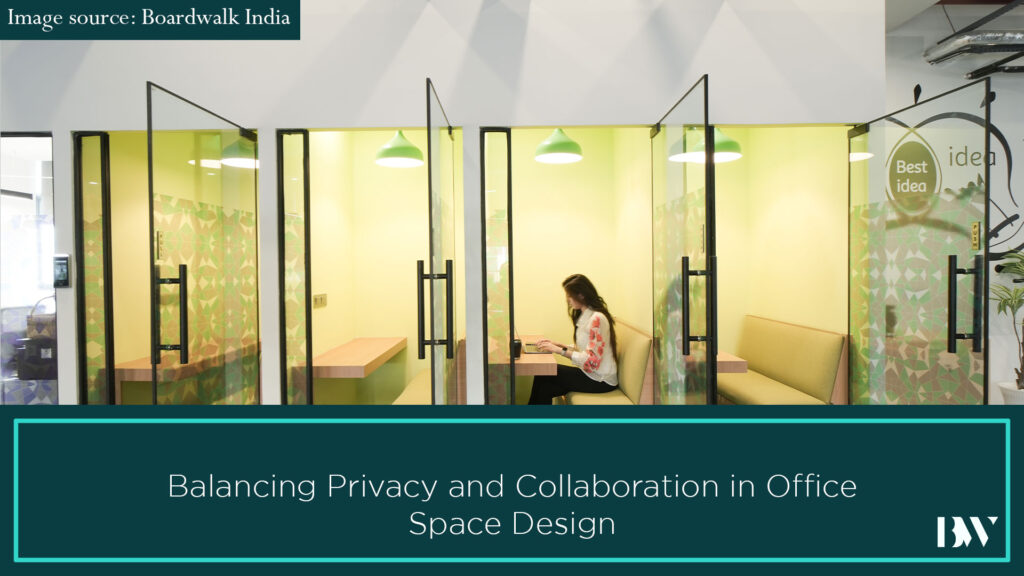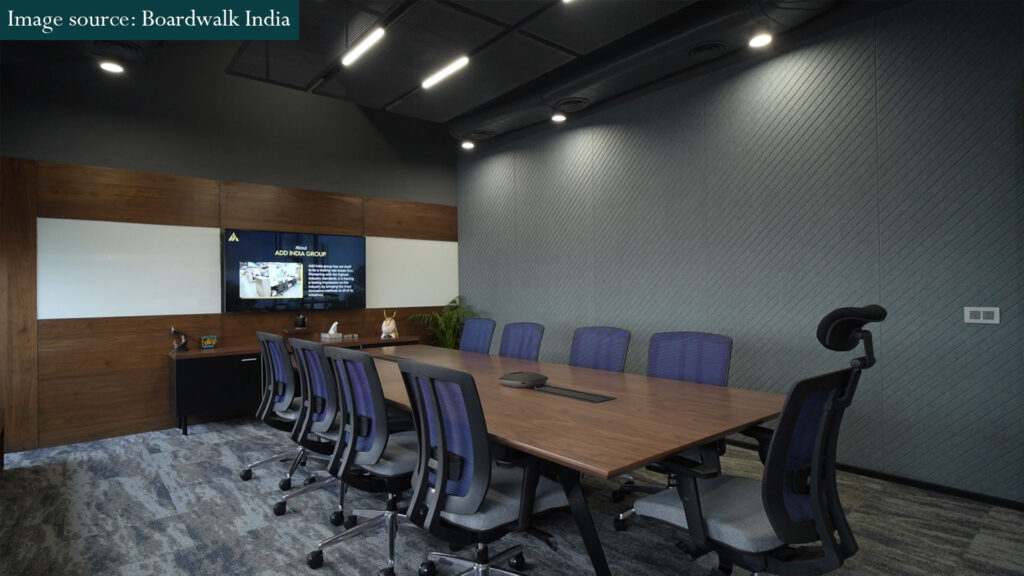Balancing Privacy and Collaboration in Office Space Design

Employee annoyance is a result of open office space design environments’ advantages, which include more light, simple cooperation, a sense of community, and ideal cross-pollination. There will be more noise, less privacy, more interruptions, and less control over your surroundings if there are no office space designs, walls, or doors.
What is the best way to strike a balance between your team’s creative gathering needs and quiet concentration time?
Here are nine strategies to lessen distractions and encourage productive open-office space design teamwork.
Table of Contents:
1. Be open to remote work arrangements
2. Examine meeting places
3. Go beyond your typical team configuration
4. Promote self-awareness
5. Give workers more authority
6. Build out your space differently
7. Urge boisterous activities to relocate
8. Schedule quiet times
9. Filter the noise, if you can’t reduce it

1. Be open to remote work arrangements
Does your organisation still have rules that prohibit or discourage working remotely? It might be time to review your open office space design policy if they don’t provide quiet rooms or other spaces where staff members can find the calm they require to work efficiently.
Remember that working remotely need not equate to working from home. Allowing staff to move to a neighbouring coffee shop can be necessary to keep them close enough to the office space design for last-minute meetings.
An informal structure where workers can work from home as needed might work, depending on the demands of your business. Some teams might need a more structured timetable, where employees work from home on Tuesdays and Thursdays and off-site on Mondays and Wednesdays.
Would it be beneficial to your company? Learn more about it here: Making a flexible work schedule effective for your business
2. Examine meeting places
Everyone usually pauses in copier rooms and break rooms to talk about projects, their weekends, and corporate news. That is advantageous. But if the noise from the room continues throughout the day and disturbs other employees, it’s time to take action beyond simply posting posters requesting quiet.
To encourage productive open office space design cooperation, think about moving or walling off your company’s natural gathering places or relocating neighbouring employees to calmer sections.
3. Go beyond your typical team configuration
Businesses frequently seat all of the marketers together, all of the accountants together, etc., disregarding the needs of each person’s office space design. To everyone’s annoyance, the chatty collaborators end up mingling with the others who need to focus.
Think about whether Ken, your quiet marketing analyst, really needs to work among your noisy sales staff. There may be a quieter spot around the corner where Ken may be more productive and happy.
4. Promote self-awareness
John has a loud phone voice, but Dana prefers to discuss her ideas with coworkers. It’s your responsibility as a manager to help staff members become sufficiently self-aware so that their innate work habits don’t irritate other staff members. Tell noisy workers to transfer their mini-meetings to designated collaboration zones or to conduct calls in another area. Additionally, ensure that everyone on your team feels free to voice their needs for more privacy or flexibility when working together.
5. Give workers more authority
One problem with open office space design is the lack of control over the office space design.
Permitting workers to leave a note at their desk informing their colleagues that they require undisturbed time to focus can make them feel more in control of their office space design. On the note, it can say, “Need to focus.” Project completion date is 3 p.m.
An additional choice would be to provide everyone with a universal identifier, like a sign, flag, or light. Workers indicate their desire for privacy by placing a marker on their desks when they require quiet time. By doing this, employees will be deterred from “popping in” or making other disruptions.
In order to get work done, you may also let employees shift to different parts of the building for a few hours or even days. You can also encourage staff members who are bothered by noise to go for a walk outside to decompress. You may even remove the lock on the thermostat so that workers can personalise their office space design.
6. Build out your space differently
Though this is probably the most expensive choice, if your office space design is all one big open room, it’s time to pay for reinstalling some walls and doors.
Think about what your team needs. Would they like one large conference room, a number of little quiet rooms for lone workers, or collaborative office space design for groups of two to five people? How about a retro phone booth where people could make private calls? What about outside on a terrace with benches or tables and chairs?
7. Urge boisterous activities to relocate
If your weekly team meeting bothers the people who work nearby, think about holding it outside or in another location. Likewise, advise that a group of people who frequently gather in a shared office space design for lunch relocate to the designated break room. Inquire as to why they aren’t eating there already. The space may require modifications to become a natural gathering place, such as adding more chairs or adding windows.
8. Schedule quiet times
Setting up quiet periods could be beneficial, depending on the kind of work your team performs. If the entire team needs to get their act together and finish a project on time, it could be a specific time every day, one day every week, or even an entire week.
Quiet periods should be scheduled ahead of time and shared with other teams in preparation for maximum effectiveness.
9. Filter the noise, if you can’t reduce it
Encourage staff to utilise headphones and provide sound-absorbing materials to their office space design if noise levels are a regular source of complaints and it is not feasible to move or build out extra space. Carpets and plants are two inexpensive yet effective sound-absorbing materials that can greatly reduce noise.
You could even get noise-cancelling headphones with the corporate emblem printed on them for every member of your crew. While some workers may find that listening to music helps them shut out noise, others might find that white noise or natural noises work better. There are numerous free internet services accessible.
Conclusion
It’s vital that you confer with your team prior to making any modifications, regardless of the alternatives you attempt. Once the modifications have been put into place, evaluate whether they have truly improved employee happiness and productivity over a period of three to six months.
For more information on balancing privacy and collaboration in office space design, visit us at www.boardwalkindia.com
